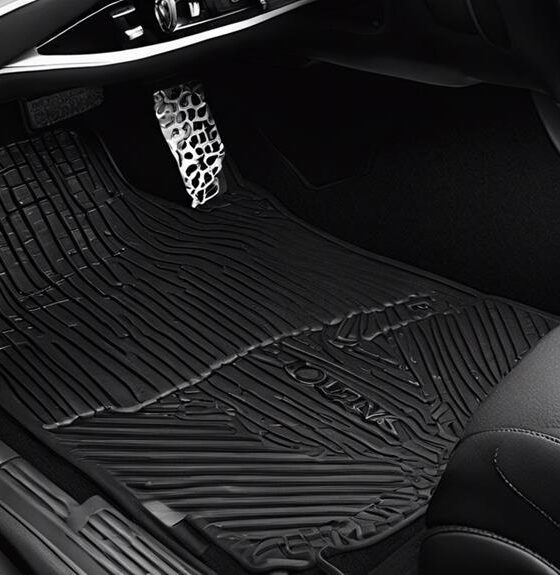Appliances
What Do Reverse Fans Do?
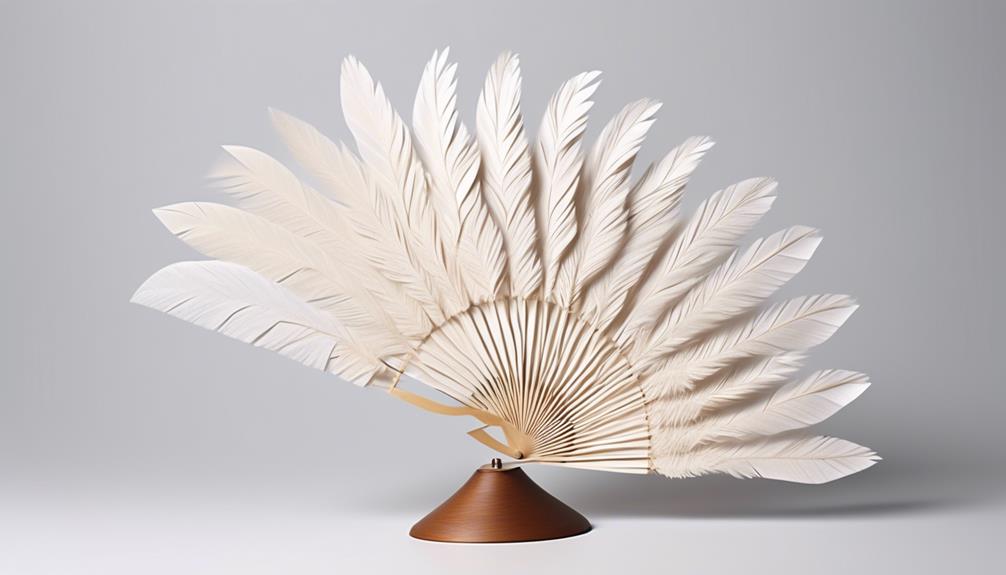
It is often said that the most straightforward solution can be the most effective. This is certainly true in the case of enhancing air flow and energy efficiency within our homes or workplaces, where the use of reverse fans stands as a perfect illustration of this principle.
So, what do reverse fans do? Well, let us explain. Reverse fans, also known as reversible ceiling fans, are designed to rotate in two directions: clockwise and counterclockwise. By changing the direction of the fan blades, reverse fans can effectively distribute air throughout the room, creating a comfortable and well-ventilated environment.
In this article, we will delve into the inner workings of reverse fans, explore their benefits, and provide helpful tips on how to choose, install, and maintain them. So, let's get started and discover the wonders of reverse fans together.
Key Takeaways
- Reverse fans rotate in two directions: clockwise and counterclockwise.
- They improve air circulation, reduce temperature variations, and enhance system performance.
- Reverse fans can change the direction of airflow to meet specific requirements.
- They increase air circulation, improve comfort, and reduce energy costs.
Understanding Reverse Fans
Reverse fans are a crucial component in various mechanical systems, providing the necessary airflow to facilitate the process of reverse air circulation. Understanding the features and benefits of using reverse fans is essential for achieving optimal performance and efficiency in these systems.
One key feature of reverse fans is their ability to change the direction of airflow. This allows them to be used in applications where the desired airflow direction is opposite to the natural flow. By simply reversing the rotation of the fan blades, the airflow can be redirected to meet specific requirements. This versatility makes reverse fans suitable for a wide range of applications, including ventilation systems, cooling systems, and air conditioning units.
The benefits of using reverse fans are numerous. Firstly, they enhance the efficiency of air circulation by promoting the even distribution of air throughout the system. This helps to minimize temperature variations, reduce energy consumption, and improve overall system performance.
Secondly, reverse fans can also be utilized for exhaust purposes, effectively removing stale air, odors, and pollutants from the environment.
How Reverse Fans Work

To understand the inner workings of reverse fans, it's important to delve into the intricate mechanisms that enable these devices to efficiently change the direction of airflow. Reverse fan technology is designed to provide users with the ability to control the direction of airflow in a room, allowing for enhanced comfort and energy efficiency.
At the heart of reverse fan technology is a reversible motor that enables the fan blades to rotate in both clockwise and counterclockwise directions. By reversing the direction of rotation, the fan is able to push air either downwards or upwards, depending on the desired airflow pattern.
To achieve this, reverse fans are equipped with a switch or remote control that allows users to easily change the direction of rotation. When the fan rotates in a counterclockwise direction, it creates a cooling breeze by pushing air downwards, providing a gentle and refreshing airflow. Conversely, when the fan rotates in a clockwise direction, it creates an updraft that circulates warm air throughout the room, promoting better heating efficiency during colder seasons.
In addition to the reversible motor, reverse fans also incorporate aerodynamic fan blade designs that optimize the airflow patterns. These blades are carefully angled and shaped to efficiently move air in the desired direction while minimizing noise and energy consumption.
The Benefits of Reverse Fans
Reverse fans provide several benefits, including increased air circulation and energy efficiency.
By reversing the direction of the fan blades, reverse fans can help distribute air more effectively throughout a room, improving comfort and reducing hot and cold spots.
Additionally, reverse fans can help lower energy costs by allowing users to rely less on heating and cooling systems, as the improved air circulation helps maintain a more consistent temperature.
Increased Air Circulation
By optimizing air flow and improving circulation, reverse fans offer a range of benefits that enhance the overall comfort and efficiency of any space. Here is how increased air circulation can improve the comfort and reduce energy costs in your environment:
- Enhanced cooling: Reverse fans help distribute cool air evenly throughout the room, preventing hot spots and creating a more comfortable environment.
- Improved ventilation: By circulating air, reverse fans help remove stagnant air, odors, and pollutants, promoting a healthier indoor environment.
- Energy savings: Reverse fans can be used in conjunction with air conditioning systems to help reduce the load on the cooling system. This can lead to energy savings and lower utility bills.
- Winter warmth: Reverse fans can also be used in colder months by running them in reverse. This gentle updraft helps distribute warm air that naturally rises, improving overall heating efficiency.
With increased air circulation, reverse fans not only provide increased comfort but also contribute to energy savings, making them an excellent addition to any space.
Energy Efficiency
Increased energy efficiency is one of the key benefits of utilizing reverse fans in any space. By improving airflow and reducing electricity usage, reverse fans help to optimize the energy consumption of a room.
When a reverse fan is used in the winter, it helps to distribute warm air that rises to the ceiling, thereby reducing the need for additional heating. This not only results in a more comfortable environment but also reduces the reliance on heating systems, ultimately leading to lower electricity usage and cost savings.
In the summer, reverse fans can be used in conjunction with air conditioning to enhance its effectiveness. By circulating the cool air throughout the room, reverse fans allow for higher thermostat settings, resulting in reduced energy consumption.
Improving Air Circulation With Reverse Fans

To enhance the circulation of air in a space, one can employ the use of reverse fans. These fans are specially designed to improve air movement and create a more comfortable environment.
Here are some ways in which reverse fans can help improve air circulation:
- Reverse Fan Features: Reverse fans come with unique features that make them effective in improving air circulation. These features include adjustable speed settings, which allow you to control the airflow according to your preferences. Additionally, reverse fans often have oscillation capabilities, which help distribute air evenly throughout the room.
- Reverse Fan Placement: Proper placement of reverse fans is crucial for optimizing air circulation. It's recommended to place the fan in a location that allows for maximum coverage of the space. This can be achieved by positioning the fan in a centralized area, such as the middle of the room or near a doorway. Placing the fan near windows or vents can also help facilitate the movement of fresh air into the space.
- Angle Adjustment: Another way reverse fans improve air circulation is by allowing you to adjust the angle of the fan head. By tilting the fan upwards, you can direct the airflow towards the ceiling, which helps create a gentle breeze that circulates throughout the room. This upward airflow can also help distribute cool air from air conditioning units more effectively.
- Complementary Use: Reverse fans can be used in conjunction with other methods of improving air circulation, such as opening windows or using ceiling fans. By combining these techniques, you can create a cross-breeze effect that enhances the overall airflow in the space.
Enhancing Energy Efficiency With Reverse Fans
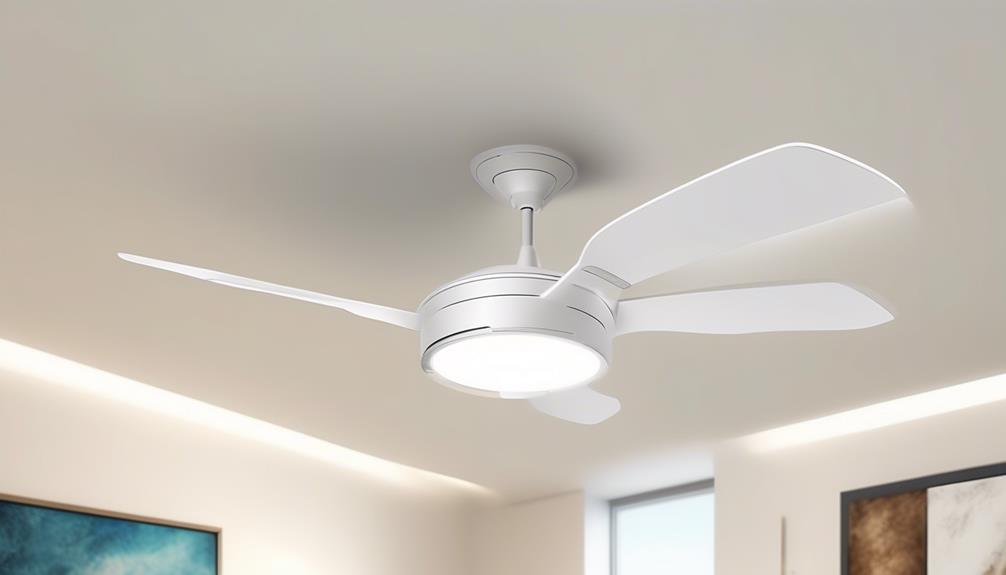
When it comes to enhancing energy efficiency with reverse fans, there are two main points to consider: the energy-saving benefits and temperature regulation.
Reverse fans are designed to circulate air in a way that can help reduce the need for air conditioning or heating, thus saving energy.
Energy-Saving Benefits
Using a reverse fan can significantly enhance energy efficiency, providing valuable energy-saving benefits. Here are four ways in which reverse fans contribute to reducing utility bills and improving home comfort:
- Improved Air Circulation: Reverse fans help distribute conditioned air evenly throughout the room, eliminating hot and cold spots. This ensures that your heating or cooling system doesn't have to work as hard, reducing energy consumption.
- Heat Redistribution: By running the fan in reverse during colder months, warm air trapped near the ceiling is pushed down, making the room feel warmer without relying solely on heating systems.
- Reduced HVAC Usage: With reverse fans promoting better air circulation and heat redistribution, you can rely less on your heating and cooling systems. This leads to lower energy consumption and reduced utility bills.
- Summer Cooling: Reverse fans can be used in conjunction with air conditioning to create a wind-chill effect, allowing you to set your thermostat higher without sacrificing comfort. This results in energy savings without compromising home comfort.
Temperature Regulation
As we continue to explore the energy-saving benefits of reverse fans, let us now delve into the subtopic of temperature regulation and how it enhances energy efficiency. Reverse fans play a crucial role in temperature control within cooling systems. By reversing the direction of the fan blades, reverse fans can effectively distribute hot or cold air throughout a room or space. This enables more efficient heating or cooling by ensuring that the air is evenly distributed, preventing hot or cold spots. The use of reverse fans also helps to reduce energy consumption by allowing the cooling or heating system to work more effectively. By optimizing airflow and temperature distribution, reverse fans contribute to overall energy efficiency and cost savings.
| Temperature Control with Reverse Fans | Benefits |
|---|---|
| Even distribution of hot or cold air | Prevents hot or cold spots |
| Optimizes airflow | Increases energy efficiency |
| Enhances overall system performance | Reduces energy consumption |
| Promotes cost savings | Improves comfort levels |
Choosing the Right Reverse Fan for Your Space

To select the most suitable reverse fan for your space, it's imperative to carefully consider the specific requirements and dimensions of the area. Making the right choice ensures optimal air circulation and temperature regulation.
Here are four essential factors to consider when choosing the right reverse fan:
- Proper Placement: The placement of the reverse fan significantly affects its performance. Ensure that the fan is positioned in a central location to maximize airflow throughout the space. Avoid placing it near obstacles or in corners that may obstruct the airflow.
- Choosing the Right Fan Size: Fan size plays a crucial role in determining its effectiveness. Consider the dimensions of the room when selecting the appropriate fan size. Generally, larger rooms require fans with larger diameters to create sufficient airflow.
- Blade Configuration: Different blade configurations offer varying levels of airflow. Fans with three or more blades tend to provide better airflow compared to those with fewer blades. Additionally, blades with a steeper pitch generate more airflow, making them ideal for larger spaces.
- Noise Level: Consider the noise level of the fan, especially if you plan to install it in a bedroom or a quiet workspace. Opt for fans with lower decibel ratings to minimize potential distractions.
Installation and Maintenance of Reverse Fans
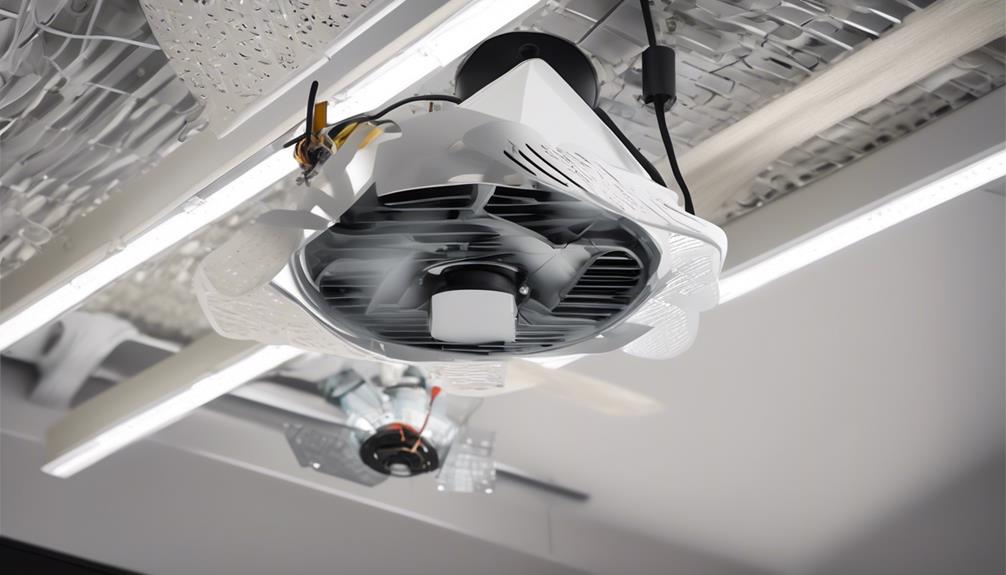
Installing and maintaining reverse fans requires careful attention to ensure proper functionality and longevity. Reverse fan maintenance is crucial to keep the fans operating at their best, while troubleshooting reverse fans helps identify and fix any issues that may arise. Here are some important tips for installation and maintenance:
- Proper Installation: When installing a reverse fan, make sure it's securely mounted to prevent vibrations and reduce noise. Follow the manufacturer's instructions for wiring and ensure the fan is correctly grounded.
- Regular Cleaning: Dust and debris can accumulate on the fan blades and hinder performance. Clean the blades regularly using a soft, damp cloth or a vacuum cleaner to maintain optimal airflow.
- Lubrication: Lubricating the fan motor bearings is essential to reduce friction and noise. Refer to the manufacturer's guidelines for the recommended lubrication schedule and use a high-quality lubricant.
- Inspecting and Replacing Parts: Regularly inspect the fan for any signs of wear or damage, such as loose screws or worn-out belts. Replace any faulty parts promptly to prevent further damage and ensure the fan's efficiency.
Troubleshooting reverse fans involves identifying and resolving common issues such as motor failure, improper airflow, and excessive noise. Refer to the manufacturer's troubleshooting guide or consult a professional if you encounter any problems beyond your expertise.
Regular maintenance and prompt troubleshooting will ensure the optimal performance and longevity of your reverse fans.
Tips for Using Reverse Fans Effectively

When using reverse fans, it's important to utilize them effectively in order to maximize their benefits and ensure optimal airflow. Here are some tips for using reverse fans effectively:
- Regular Cleaning: To maintain the performance of your reverse fan, it's essential to clean it regularly. Dust and debris can accumulate on the blades and hinder airflow. Use a soft cloth or brush to gently clean the fan blades. Avoid using harsh chemicals that may damage the fan's surface.
- Check for Proper Balance: Over time, reverse fans can become unbalanced, leading to vibrations and noise. To ensure smooth operation, check the balance of the fan regularly. If you notice any wobbling or shaking, use a fan balance kit to correct the imbalance.
- Adjust Fan Speed: Reverse fans often come with multiple speed settings. Experiment with different speeds to find the one that suits your needs best. Higher speeds provide greater airflow, while lower speeds offer quieter operation. Adjust the speed according to the room temperature and comfort level desired.
- Troubleshooting Common Issues: If your reverse fan isn't functioning properly, there are a few common issues you can troubleshoot. Check the power supply, make sure the fan is securely plugged in, and inspect the remote control batteries. If the issue persists, consult the manufacturer's troubleshooting guide or contact customer support for further assistance.
Frequently Asked Questions About Reverse Fans

One common question that arises regarding reverse fans is how they differ from traditional ceiling fans. Reverse fans, also known as reversible ceiling fans, are designed with a unique feature that allows them to rotate in the opposite direction compared to traditional ceiling fans. This feature enables the reverse fan to provide different benefits depending on the season.
One of the common misconceptions about reverse fans is that they're only useful during the summer months. While it's true that reverse fans provide excellent cooling effects during hot weather, they also have significant advantages during the colder months. Reverse fans are equipped with a reverse switch, which allows them to rotate in the opposite direction, pushing warm air downwards and circulating it throughout the room. This can help to evenly distribute the warm air produced by heating systems, reducing energy consumption and improving overall comfort.
Another misconception is that reverse fans are more expensive than traditional ceiling fans. In reality, reverse fans are available in various price ranges, just like traditional ceiling fans. The cost depends on factors such as the brand, design, size, and additional features. It's important to consider the long-term benefits and energy-saving potential when comparing the prices of reverse fans and traditional ceiling fans.
What Are the Benefits of Using Reverse Fans in the Home?
By understanding the ceiling fan reverse rotation reason, homeowners can leverage the benefits of using reverse fans in the home. These fans can help circulate warm air throughout the room during the colder months, reducing the need for constant heating and potentially saving on energy costs.
Frequently Asked Questions
Can Reverse Fans Be Used in Outdoor Spaces?
Reverse fans can indeed be used in outdoor spaces. They offer various energy efficiency benefits, making them ideal for outdoor use.
When selecting the right size and style of reverse fan for outdoor spaces, there are a few tips to keep in mind. Firstly, consider the size of the area you want to cool or circulate air in. Additionally, choose a fan that's specifically designed for outdoor use, as it will be more durable and able to withstand the elements.
Can Reverse Fans Be Controlled Remotely?
Using reverse fans in remote controlled environments offers several benefits.
Firstly, it allows for easy adjustment of fan speed and direction without needing to physically interact with the fan. This convenience is especially useful in hard-to-reach areas or when the fan is mounted high up.
Additionally, remote control functionality enables users to optimize energy consumption by adjusting the fan settings according to their needs, reducing unnecessary usage and ultimately saving electricity.
Are Reverse Fans Compatible With Smart Home Systems?
Reverse fans are indeed compatible with smart home systems, providing numerous energy efficiency benefits.
By integrating reverse fans into a voice-controlled smart home system, users can easily adjust the fan's direction and speed to optimize comfort and save energy.
This seamless integration allows for precise control and monitoring of the fan's operation, maximizing its potential in creating a comfortable and energy-efficient environment.
The integration of reverse fans with smart home systems is a valuable addition for those seeking mastery over their home's energy consumption.
How Noisy Are Reverse Fans When They Are in Use?
When it comes to reverse fans, one important consideration is the noise level when in use. Proper maintenance is key to ensuring a quieter operation. Regularly clean and lubricate the fan blades and motor to minimize friction noise. Inspect and tighten any loose components that may cause rattling sounds. Consider using sound-absorbing materials around the fan to dampen noise.
Can Reverse Fans Be Used in Conjunction With Air Conditioning Units?
Reverse fans can indeed be used in conjunction with air conditioning units. In fact, this combination can greatly enhance energy efficiency and airflow optimization in a space.
By utilizing reverse fans alongside air conditioning, we can effectively distribute cool air throughout the room, ensuring that every corner receives the desired temperature. This not only improves comfort levels but also reduces energy consumption by allowing the air conditioning unit to work more efficiently.
Conclusion
In conclusion, reverse fans offer a practical solution for improving air circulation and energy efficiency in various spaces. By reversing the direction of airflow, these fans can effectively distribute warm or cool air throughout a room, enhancing comfort and reducing the need for excessive heating or cooling.
With proper installation and maintenance, reverse fans can be a valuable addition to any space. So, why wait? Take the plunge and reap the benefits of reverse fans – it's a breeze!
- About the Author
- Latest Posts
Meet Bethia, the visionary designer at ByRetreat who brings a touch of magic to every remote workspace she creates. With a boundless imagination and an eye for beauty, Bethia is passionate about transforming ordinary spaces into extraordinary havens of creativity and comfort.
Bethia possesses a unique talent for envisioning the perfect combination of furniture, colors, and textures that harmonize seamlessly in a room. She understands that selecting furniture goes beyond mere functionality; it’s about curating pieces that evoke a sense of style and sophistication while enhancing the overall ambiance.
Appliances
3 Smart HVAC Solutions for Compact Areas
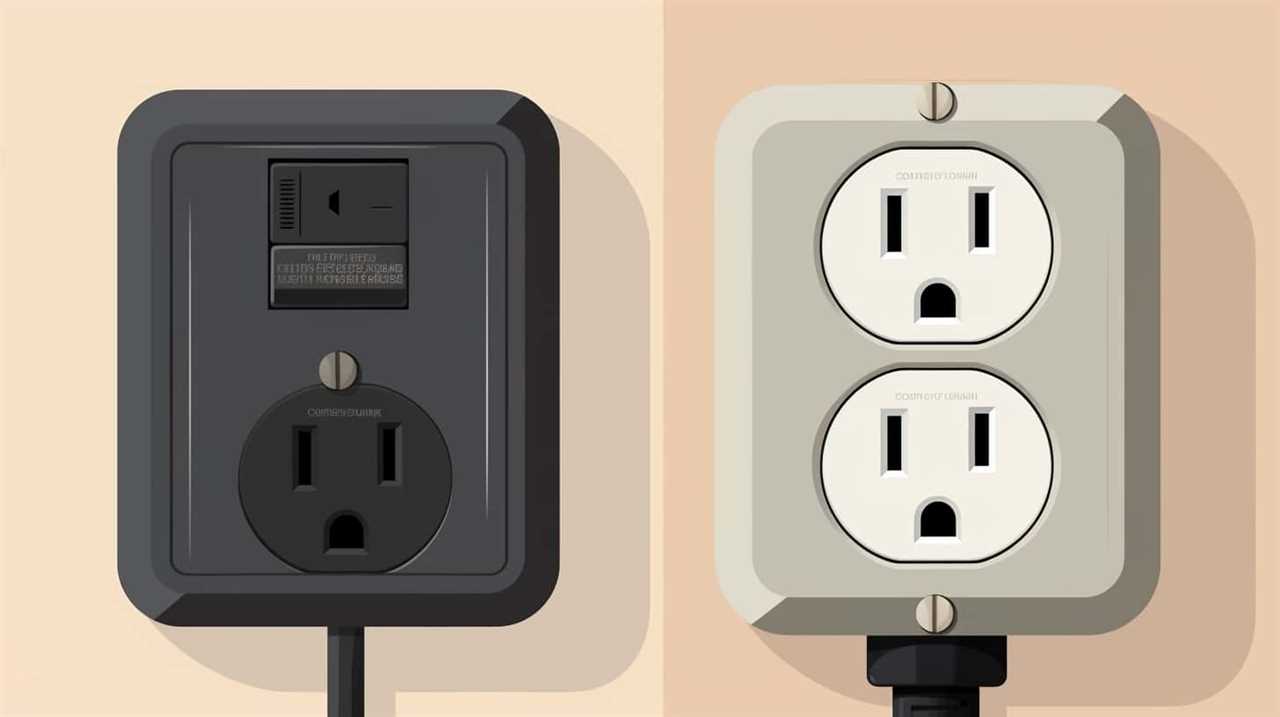
Searching for intelligent HVAC solutions for small spaces? Your search ends here! We offer three high-quality options that will ensure your area stays cozy and energy-efficient.
First up, we have Mini Split Systems. These compact wonders provide both heating and cooling in one sleek package. With their advanced technology and customizable settings, you’ll have complete control over your indoor climate.
Next, we have Window Air Conditioners. Perfect for small spaces, these units fit snugly in your window and deliver powerful cooling.
Lastly, we have Portable Heat Pumps. These versatile machines can easily be moved from room to room, providing heating and cooling wherever you need it most.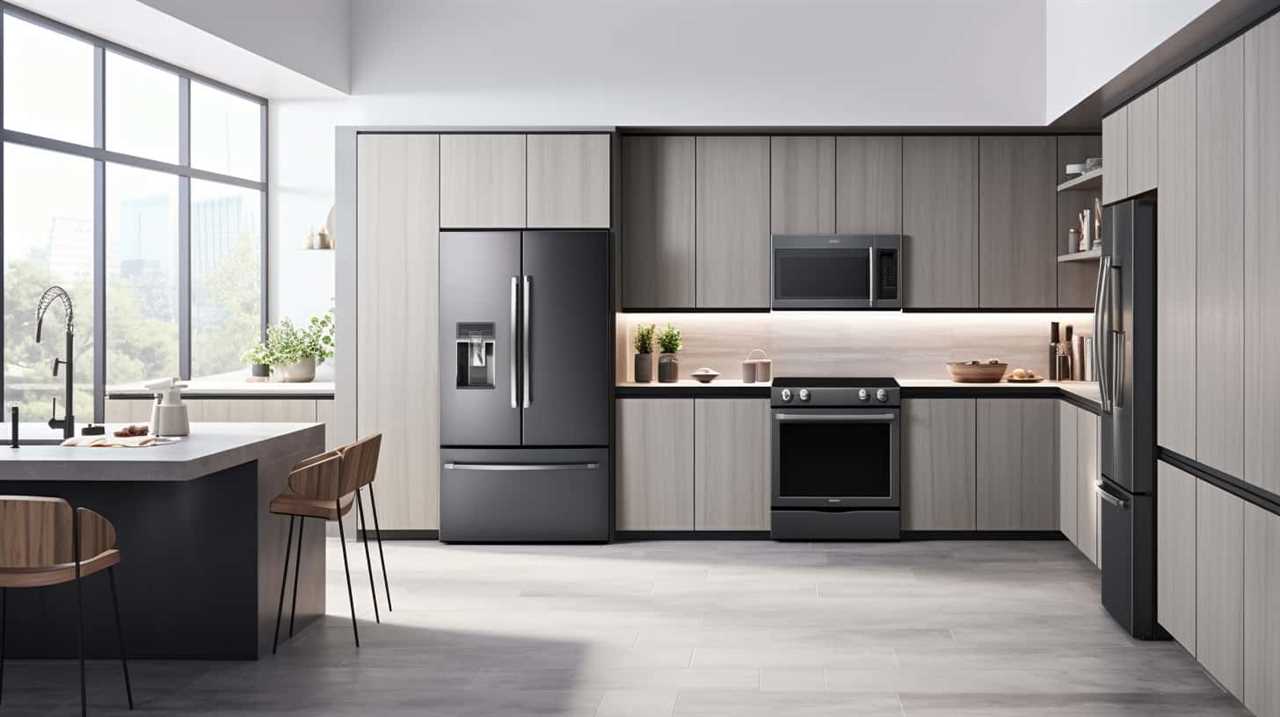
So, whether you’re a master of efficiency or simply looking to maximize comfort in a compact area, these smart HVAC solutions are sure to impress.
Key Takeaways
- Mini split systems provide efficient cooling and heating in compact areas.
- They offer flexibility in installation without the need for ductwork.
- Individual zone control allows for personalized comfort.
- Mini split systems have superior energy efficiency and quieter operation.
Mini Split Systems
We use mini split systems to efficiently cool and heat compact areas. Mini split systems, also known as ductless AC units, are a popular choice for energy efficient cooling in small spaces. These systems consist of two main components: an outdoor condenser unit and an indoor air handler. The condenser unit is responsible for cooling or heating the refrigerant, while the air handler distributes the conditioned air within the room.
One of the key advantages of mini split systems is their flexibility in installation. Unlike traditional central air conditioning systems that require extensive ductwork, mini split systems eliminate the need for ducts altogether. This makes them ideal for compact areas where ductwork installation may not be feasible or cost-effective.
Additionally, mini split systems offer individual zone control, allowing different rooms or areas to be cooled or heated independently. This not only increases energy efficiency by avoiding unnecessary cooling or heating of unoccupied spaces, but also provides personalized comfort for each room’s occupants.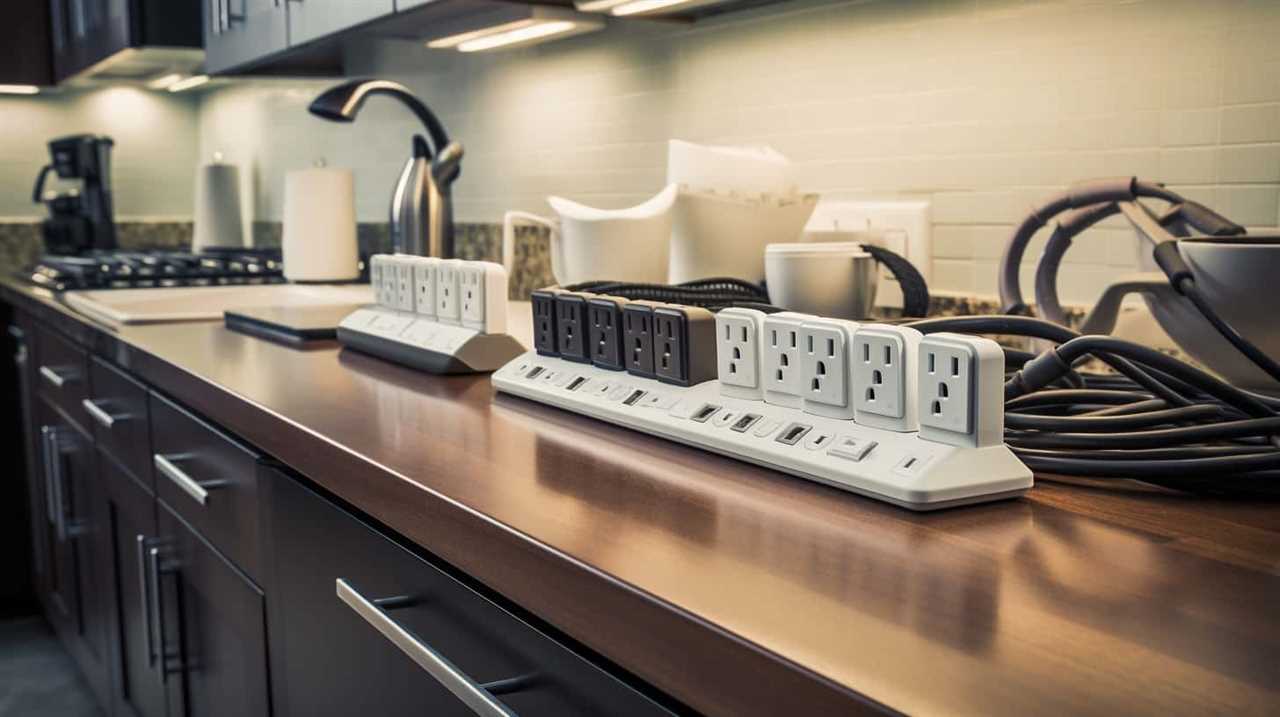
In comparison to window air conditioners, mini split systems offer superior energy efficiency and quieter operation. They’re also more aesthetically pleasing as the indoor air handlers can be mounted on walls, ceilings, or even recessed into the ceiling for a more discreet appearance.
With their ductless design, energy efficiency, and individual zone control, mini split systems are an excellent choice for efficiently cooling and heating compact areas. Now, let’s move on to the next section and explore the features and benefits of window air conditioners.
Window Air Conditioners
To effectively cool and heat compact areas, one smart HVAC solution is the use of window air conditioners. Window air conditioners are a popular choice for small spaces because of their energy efficiency and relatively simple installation requirements.
When it comes to energy efficiency, window air conditioners have made significant advancements in recent years. Many models now come with an Energy Star rating, indicating that they meet strict energy efficiency guidelines set by the Environmental Protection Agency. These units are designed to provide optimal cooling and heating while consuming minimal energy, helping you save on your utility bills.
Installation requirements for window air conditioners are generally straightforward. These units are designed to fit into standard-sized window openings, eliminating the need for extensive modifications to your space. Most models come with a mounting kit that includes brackets and screws to secure the unit in place. It’s important to ensure that the window is properly sealed to prevent air leakage and maintain optimal energy efficiency.
Portable Heat Pumps
One option for effectively cooling and heating compact areas is by using portable heat pumps. These compact devices offer energy-efficient options for maintaining comfortable temperatures in small spaces. Portable heat pumps are designed to be easily moved from room to room, providing targeted heating or cooling where it is needed most.
To engage the audience further, here is a table outlining some key features and benefits of portable heat pumps:
| Features | Benefits |
|---|---|
| Energy efficient | Reduces energy consumption and costs |
| Easy installation | No need for complex installation |
| Versatile | Can be used in various settings |
| Noise reduction | Incorporates noise reduction techniques |
Portable heat pumps are an excellent choice for those looking for energy-efficient cooling and heating solutions in compact areas. They offer the flexibility to be moved around as needed, providing comfort wherever it is required. Additionally, these devices incorporate noise reduction techniques, ensuring a quiet and peaceful environment. By utilizing portable heat pumps, you can effectively regulate the temperature in compact spaces while minimizing energy consumption.
Frequently Asked Questions
Are There Any Energy-Saving Features in Smart HVAC Solutions for Compact Areas?
Yes, there are energy-saving features in smart HVAC solutions for compact areas.
These solutions incorporate energy-efficient technologies to optimize heating, ventilation, and air conditioning systems.
By utilizing advanced sensors and automation, they can adjust temperature settings based on occupancy and outdoor conditions, reducing energy consumption.
Additionally, smart HVAC solutions offer cost-effective solutions by providing real-time energy usage data and allowing for remote monitoring and control.
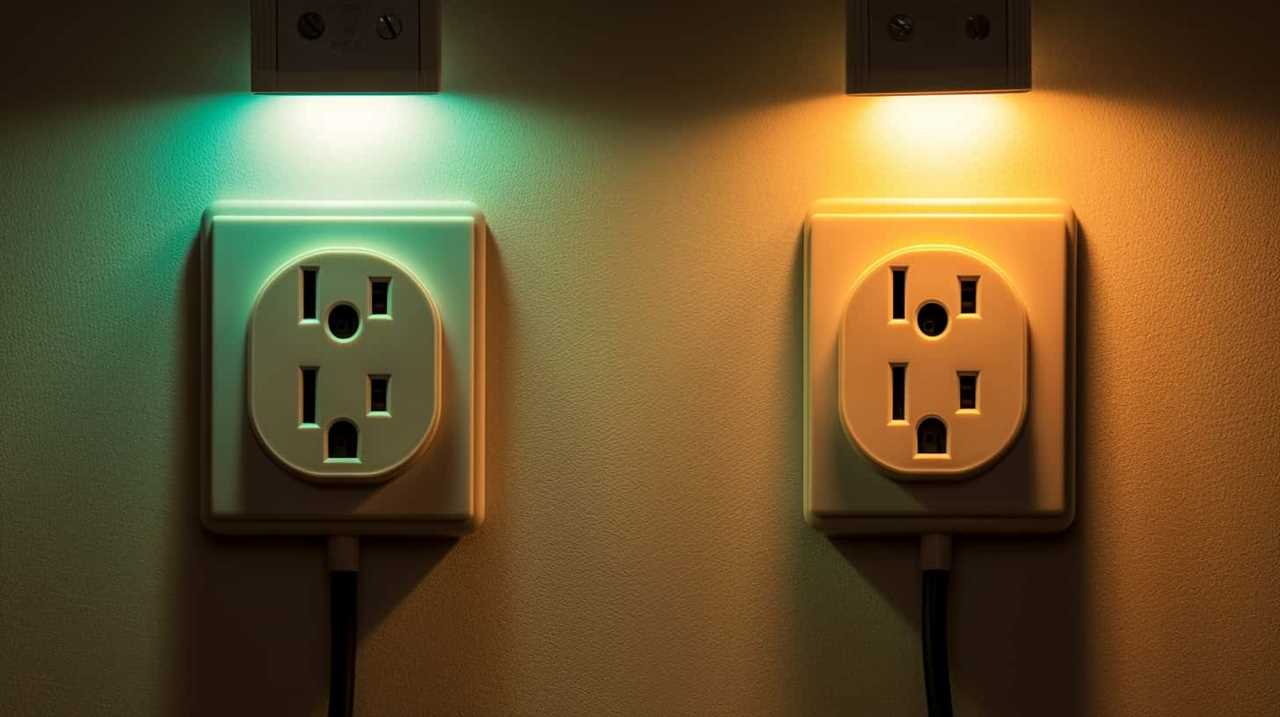
Can Smart HVAC Systems Be Controlled Remotely Through a Smartphone or Other Smart Devices?
Yes, smart HVAC systems can be controlled remotely through a smartphone or other smart devices. This feature is one of the many benefits of using a smart HVAC system.
The installation process for these systems involves connecting the HVAC unit to a Wi-Fi network and downloading the relevant mobile app. Once installed, users can easily adjust temperature settings, monitor energy usage, and receive notifications on their smart devices, providing convenience and energy-saving capabilities.
What Is the Average Lifespan of a Mini Split System?
The average lifespan of a mini split system is typically around 15 to 20 years. However, this can vary depending on factors such as maintenance, usage, and environmental conditions.
It’s important to note that regular maintenance and cleaning of the system can help prolong its lifespan.
Additionally, mini split systems are known for their energy efficiency, as they allow for zone cooling and heating, reducing energy waste and providing greater control over comfort levels.
Is It Possible to Install a Mini Split System Without Professional Assistance?
Installing a mini split system without professional assistance isn’t recommended. Professional installation offers numerous benefits, including expertise in proper placement, sizing, and wiring. Their knowledge ensures optimal performance and efficiency. Additionally, they can address any potential issues or complications that may arise during the installation process.
Attempting to install a mini split system without professional assistance can result in improper installation, decreased performance, and potential safety hazards. It’s best to rely on professionals for a successful and safe installation.
Are There Any Specific Maintenance Requirements for Portable Heat Pumps?
Specific maintenance requirements for portable heat pumps include: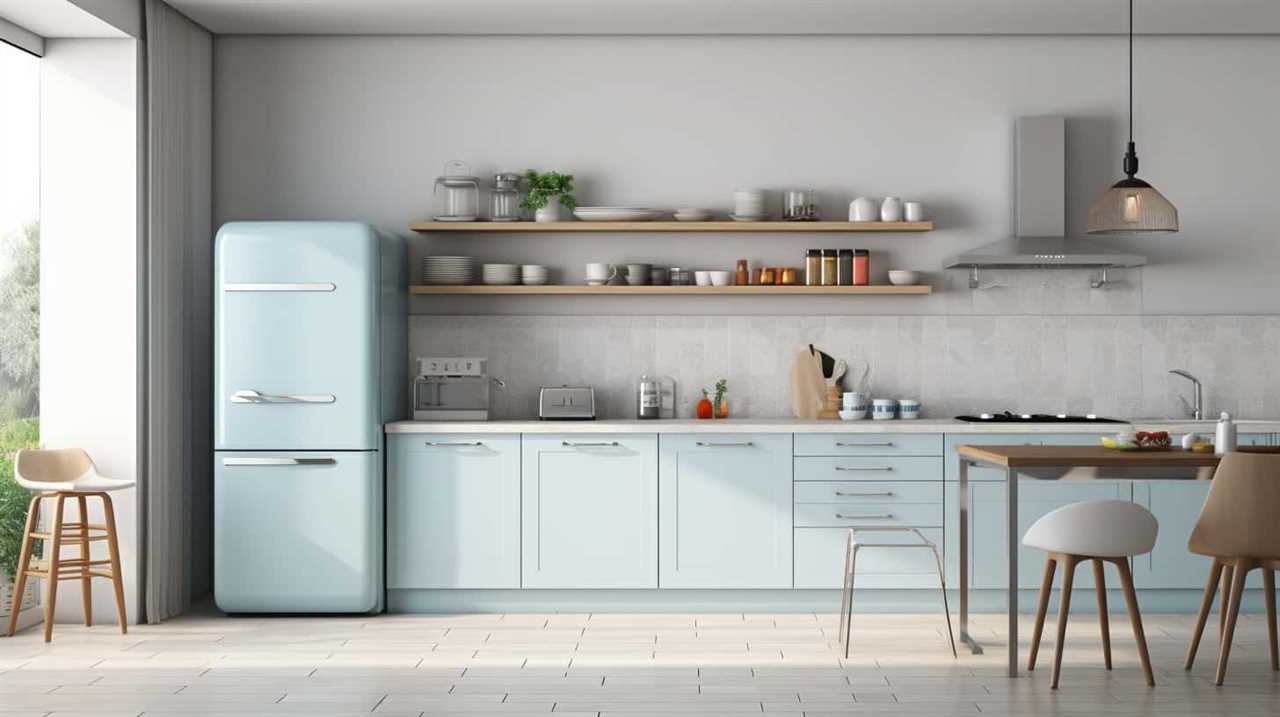
- Regular filter cleaning or replacement
- Inspection of coils for dirt or debris buildup
- Checking for any leaks or unusual noises
Troubleshooting common issues involves:
- Checking the power supply
- Ensuring proper ventilation
- Adjusting the thermostat settings
It’s also recommended to schedule professional maintenance at least once a year to ensure optimal performance.
Conclusion
In conclusion, when it comes to HVAC solutions for compact areas, mini split systems, window air conditioners, and portable heat pumps are three smart options to consider.
Each of these solutions offers unique benefits and can effectively cool or heat small spaces.
Just as a skilled conductor orchestrates a symphony, these HVAC systems work in harmony to create a comfortable environment in tight spaces.
So, whether it’s a small apartment or a compact office, these smart HVAC solutions can efficiently meet your heating and cooling needs.
- About the Author
- Latest Posts
Introducing Charles, the Editor in Chief at ByRetreat, whose passion for interior design and editorial excellence elevates every remote workspace to new heights. With his keen eye for detail, impeccable taste, and expertise in design, Charles brings a wealth of knowledge and creativity to the ByRetreat team.
As the Editor in Chief of a renowned lifestyle blog, Charles has honed his skills in curating captivating content and staying up-to-date with the latest trends in interior design. His deep understanding of aesthetics and the power of storytelling through design enables him to create remote workspaces that are not only visually stunning but also rich in personality and meaning.
Appliances
3 Essential Tips for RV-Friendly Portable Washers

- Pros and cons of using eco friendly laundry detergent in a portable washer.
- Tips for preventing detergent residue buildup in a portable washer
Are you exhausted from constantly looking for laundromats during your RV trips? We get it. That’s why we’re here to provide three key tips for RV-friendly portable washing machines.
While you might be thinking, ‘Do I really need a portable washer?’ trust us, having one on your RV can be a game-changer. In this guide, we’ll show you how to choose the right size washer that fits your RV’s limited space, understand the power and water requirements to ensure smooth operation, and provide you with maintenance and cleaning tips to keep your washer running efficiently.
So, let’s dive in and master the art of laundry on the road!
Key Takeaways
- Consider the laundry capacity needed for your RV.
- Look for compact and lightweight options with space-saving features.
- Choose a portable washer with high energy efficiency and water conservation features.
- Regularly maintain and clean your portable washer using recommended cleaning products.
Choosing the Right Size
One of the first considerations when selecting a portable washer for our RV is determining the appropriate size. Portable washer features and space-saving options play a crucial role in making this decision. When it comes to size, it’s important to find a washer that fits well within the limited space of an RV, while still providing enough capacity to meet our laundry needs.
To begin with, portable washers come in a range of sizes, typically measured in pounds of laundry capacity. It’s essential to consider the amount of laundry we anticipate doing on a regular basis. While a smaller capacity may be suitable for individuals or couples, larger families might require a washer with a higher capacity to accommodate their laundry demands.
Additionally, it’s important to consider the physical dimensions of the washer. RVs have limited space, so opting for a compact and lightweight washer can help maximize the available room. Some portable washers are designed with space-saving features such as folding handles, detachable components, or even stackable options that can fit neatly into tight spaces.
Understanding Power and Water Requirements
When considering the power and water requirements for our RV-friendly portable washer, we need to understand the necessary resources for optimal performance.
Energy efficiency is an important factor to consider when choosing a portable washer for your RV. Look for models that have a high Energy Star rating, as this indicates that they consume less energy and can help you save on your electricity bills.

Additionally, portable washer features such as load sensing technology and adjustable water levels can help you conserve water. These features ensure that the washer only uses the amount of water necessary to clean your laundry, which is particularly crucial when you have limited water supply in your RV.
It’s also important to check the power requirements of the portable washer. Make sure that the washer is compatible with the power source available in your RV, whether it’s a standard 120-volt outlet or a 12-volt DC power source.
Understanding the power and water requirements of your RV-friendly portable washer won’t only help you achieve optimal performance but also contribute to energy and water conservation.
Maintenance and Cleaning Tips
Let’s talk about how to properly maintain and clean your RV-friendly portable washer. Taking care of your portable washer is essential to ensure its longevity and optimal performance. Regular maintenance and cleaning will help prevent any potential issues and keep your machine running smoothly. Here are some common troubleshooting tips and recommended cleaning products to keep in mind:
| Common Troubleshooting | Recommended Cleaning Products |
|---|---|
| Leaking water | Vinegar and water mixture |
| Excessive noise | Mild detergent |
| Drum not spinning | Baking soda |
| Error codes | Citric acid |
If you encounter a problem such as leaking water, try using a mixture of vinegar and water to clean the machine’s seals and hoses. For excessive noise, use a mild detergent to clean the drum and remove any debris that may be causing the noise. If the drum is not spinning, try using baking soda to remove any buildup that may be hindering its movement. Lastly, if you receive error codes, using citric acid in the detergent compartment can help clean the sensors and resolve the issue.
Remember to always refer to your portable washer’s manual for specific maintenance instructions and troubleshooting tips. By following these guidelines and using the recommended cleaning products, you can keep your RV-friendly portable washer in great condition and enjoy clean laundry on your travels.
Frequently Asked Questions
How Long Does It Typically Take to Wash a Full Load of Laundry Using a Portable Washer?
Typically, it takes around 30 to 45 minutes to wash a full load of laundry using a portable washer.
However, it’s important to consider the capacity limitations of these machines. Most portable washers have a smaller capacity compared to traditional washers, so it may take longer if you have a larger load.
It’s always a good idea to follow the manufacturer’s instructions and not overload the machine to ensure efficient and effective washing.
Can I Use Regular Laundry Detergent in a Portable Washer, or Do I Need to Use a Specific Type?
Yes, you can use regular laundry detergent in a portable washer. However, there are some pros and cons to consider.
Using eco-friendly laundry detergent in a portable washer is a great option for those who want to reduce their environmental footprint. It can be gentler on your clothes and safer for the environment.
However, some eco-friendly detergents may not be as effective at removing tough stains. To prevent detergent residue buildup, make sure to use the recommended amount of detergent and run an extra rinse cycle if needed.
Is It Safe to Leave a Portable Washer Unattended While It’s Running?
Safety precautions should be taken when using a portable washer unattended. There are potential risks involved, such as water leakage or electrical malfunctions. It’s important to follow the manufacturer’s instructions and guidelines for safe operation.
Some tips to minimize risks include ensuring a stable surface, avoiding overloading the machine, and regularly checking for any signs of damage.
It’s always best to err on the side of caution when it comes to leaving a portable washer running without supervision.
Can I Wash Delicate Fabrics, Such as Silk or Lace, in a Portable Washer?
When it comes to washing delicate fabrics like silk or lace in a portable washer, there are a few things to keep in mind.
Firstly, check the manufacturer’s instructions to ensure that your specific model is suitable for these types of fabrics.
Secondly, use a gentle cycle and cold water to minimize any potential damage.
Lastly, consider placing delicate items in a mesh laundry bag for added protection.
With these precautions, you can safely wash your delicate fabrics in an RV-friendly portable washer.

How Noisy Are Portable Washers When in Operation?
When it comes to the noise level of portable washers, it’s important to consider their energy efficiency as well. These machines are designed to be compact and efficient, so they tend to operate quietly. While they do make some noise during operation, it’s typically minimal and shouldn’t disturb your RV neighbors or disrupt your peaceful campsite.
Plus, their energy efficiency means you can enjoy clean clothes without draining your RV’s power supply.
Conclusion
In conclusion, choosing the right size portable washer for your RV, understanding power and water requirements, and following maintenance and cleaning tips are essential for a smooth laundry experience on the road.
By coincidence, we stumbled upon a fellow traveler at a campsite who’d just purchased a portable washer based on our article. They were thrilled with the convenience and efficiency it provided.
So, take these tips into consideration and enjoy clean clothes wherever your adventures take you!
- About the Author
- Latest Posts
Introducing Charles, the Editor in Chief at ByRetreat, whose passion for interior design and editorial excellence elevates every remote workspace to new heights. With his keen eye for detail, impeccable taste, and expertise in design, Charles brings a wealth of knowledge and creativity to the ByRetreat team.
As the Editor in Chief of a renowned lifestyle blog, Charles has honed his skills in curating captivating content and staying up-to-date with the latest trends in interior design. His deep understanding of aesthetics and the power of storytelling through design enables him to create remote workspaces that are not only visually stunning but also rich in personality and meaning.
Appliances
4 Smart Tips for Extended Commercial Appliance Warranties

Did you realize that nearly 80% of commercial appliance malfunctions happen after the manufacturer’s warranty runs out? As business operators, we grasp the significance of safeguarding our assets and reducing unforeseen costs.
That’s why we have compiled four smart tips for extended commercial appliance warranties that will help you make informed decisions and ensure the longevity of your appliances.
In this guide, we will discuss choosing the right warranty provider, understanding coverage and exclusions, evaluating the cost and value, and maximizing the benefits of extended warranties.
By following these tips, you can have peace of mind knowing that your appliances are protected and your business operations can continue smoothly.
Let’s dive in and master the art of extended warranties!
Key Takeaways
- Choose a warranty provider with a good reputation and track record.
- Understand the coverage details and limitations of the warranty.
- Evaluate the cost and value of extended warranties.
- Maximize the benefits by understanding the claim process and maintaining your appliances.
Choosing the Right Warranty Provider
When selecting a warranty provider for extended commercial appliance warranties, we should consider their reputation and track record in the industry. Identifying reputable providers is crucial to ensure that we’re dealing with a company that has a history of delivering on their promises and providing excellent service to their customers. A reputable provider will have a strong presence in the market and positive reviews from satisfied clients. They’ll also have a proven track record of handling warranty claims efficiently and resolving issues promptly.
In addition to reputation, it’s important to compare warranty terms offered by different providers. We should carefully review the terms and conditions of each warranty to ensure that they meet our specific needs and requirements. This includes understanding the coverage provided, such as if it includes parts and labor costs, and the duration of the warranty. It’s also important to consider any limitations or exclusions that may apply.
Understanding Coverage and Exclusions
To fully understand the extent of coverage and any exclusions, we should carefully review the warranty terms and conditions for our extended commercial appliance warranties. Many people have common misconceptions about what’s covered under these warranties, which is why it’s so important to read the fine print. Here are some key points to consider:
- Scope of coverage: It’s crucial to understand what types of repairs or replacements are included in the warranty. This may vary depending on the provider and the specific appliance being covered. Some warranties may only cover certain parts or components, while others may offer more comprehensive coverage.
- Exclusions: Even though warranties provide coverage, there are often exclusions stated in the terms and conditions. These exclusions may include damage caused by misuse, neglect, or unauthorized repairs. It’s important to be aware of these exclusions to avoid any surprises when filing a claim.
- Duration of coverage: Extended commercial appliance warranties can vary in terms of their duration. Some warranties may provide coverage for a fixed period of time, while others may offer coverage until a certain number of repairs or replacements have been made. Understanding the duration of coverage can help us plan for future maintenance and repairs.
- Claim process: Familiarizing ourselves with the claim process is essential. This includes knowing who to contact, what documentation is required, and any specific procedures that need to be followed to ensure a smooth and efficient claim experience.
Evaluating the Cost and Value
To determine the cost-effectiveness of extended commercial appliance warranties, we need to assess their overall value. When weighing options and considering budget considerations, it is essential to evaluate the benefits and drawbacks of purchasing extended warranties for your appliances. To help you make an informed decision, we have created a table that outlines the key factors to consider:
| Factors to Consider | Benefits | Drawbacks |
|---|---|---|
| Coverage | Extended protection beyond the manufacturer’s warranty period | Additional cost |
| Repair Costs | Potential savings on repair expenses | Warranty cost may outweigh repair costs |
| Peace of Mind | Assurance that your appliances are protected | Limited likelihood of appliance failure |
By considering these factors, you can determine whether the cost of an extended warranty is justified by its value. It is important to note that budget considerations should not be the sole determining factor. While extended warranties may come at an additional cost, they can provide peace of mind and potential savings on repair expenses.
In the next section, we will explore strategies for maximizing the benefits of extended warranties, ensuring that you get the most value out of your investment.
Maximizing the Benefits of Extended Warranties
To maximize the benefits of extended warranties, we can employ strategies that optimize our investment. By understanding the claim process and exploring renewal options, we can ensure that our commercial appliance warranties provide us with the maximum value and protection.
Here are some smart tips for maximizing the benefits of extended warranties:
- Thoroughly understand the claim process: Familiarize yourself with the steps involved in filing a claim. Know the required documentation, such as proof of purchase and warranty information. By being prepared, you can expedite the claim process and minimize downtime.
- Regularly maintain your appliances: Proper maintenance is crucial for the longevity and performance of your commercial appliances. Follow the manufacturer’s guidelines for cleaning, servicing, and inspections. Regular maintenance not only extends the lifespan of your appliances but also helps prevent potential issues that may require warranty claims.
- Research renewal options: When your extended warranty is about to expire, explore renewal options offered by the warranty provider. Some providers offer extended renewal plans with additional coverage, giving you continued peace of mind and protection for your investment.
- Keep warranty documents organized: Maintain a dedicated folder or digital file for all your warranty documents. This ensures easy access to necessary information when filing a claim or renewing your warranty.
Frequently Asked Questions
How Can I Extend the Warranty on My Commercial Appliance if It’s Already Expired?
To extend the warranty on your commercial appliance after it has expired, there are several renewal options available.
You can contact the manufacturer or a third-party warranty provider to inquire about their extended warranty programs. They may offer coverage plans specifically designed for appliances with expired warranty coverage.
It’s important to carefully review the terms and conditions, as well as the cost, of these extended warranty options to ensure they meet your needs and budget.
Are There Any Specific Requirements or Limitations for Obtaining an Extended Warranty for Commercial Appliances?
When obtaining an extended warranty for commercial appliances, it’s important to be aware of the common exclusions in extended warranty coverage. These may include wear and tear, cosmetic damage, and misuse or negligence.
To choose the right extended warranty, consider factors such as the length of coverage, cost, and reputation of the provider.
It’s also crucial to thoroughly read and understand the terms and conditions of the warranty to avoid any surprises down the line.
Can I Transfer My Extended Warranty to a New Owner if I Sell My Commercial Appliance?
Yes, you can transfer your extended warranty to a new owner if you sell your commercial appliance. This ensures that the warranty coverage for used appliances continues with the new owner.
It’s important to check the specific requirements and limitations of your extended warranty to ensure a smooth transfer process. By transferring the warranty, you provide peace of mind to the new owner and protect them against any unexpected repair or replacement costs.
What Happens if My Commercial Appliance Breaks Down Multiple Times During the Extended Warranty Period?
If your commercial appliance breaks down multiple times during the extended warranty period, you may be eligible for claim reimbursement. The repair or replacement timeline will depend on the terms and conditions of your warranty.
It’s important to thoroughly review the warranty agreement to understand the process and any limitations. Our team is here to help ensure that your claims are handled efficiently and that you receive the necessary repairs or replacements in a timely manner.
Is There a Limit to the Number of Claims I Can Make Under an Extended Warranty for My Commercial Appliance?
There are limitations to the number of claims we can make under an extended warranty for our commercial appliance.
However, it’s important to note that extended warranties offer numerous benefits for commercial appliances. They provide peace of mind by covering repairs and replacements, reducing downtime and maintenance costs.
Conclusion
In conclusion, when it comes to extended commercial appliance warranties, there are several crucial considerations to keep in mind.
Firstly, choosing the right provider is essential. It’s important to research and compare different warranty providers to ensure they have a good reputation and offer comprehensive coverage.
Understanding coverage and exclusions is also crucial. Businesses should carefully review the terms and conditions of the warranty to know exactly what is covered and what is not. This will help avoid any surprises or disappointments down the line.

Evaluating cost and value is another important factor. Businesses should consider the cost of the warranty in relation to the potential repair or replacement costs of the appliances. They should also assess the value of the warranty by considering additional benefits such as extended service hours or priority service.
Lastly, maximizing benefits is key. Businesses should take advantage of all the benefits offered by the warranty, such as regular maintenance or discounted repairs. This will help ensure the appliances are well-maintained and any issues are addressed promptly.
By following these smart tips, businesses can make informed decisions that protect their investments. Just like a well-oiled machine, a well-chosen warranty can provide peace of mind and keep the business running smoothly. So don’t leave your appliances vulnerable, take action and secure their longevity today.
- About the Author
- Latest Posts
Introducing Charles, the Editor in Chief at ByRetreat, whose passion for interior design and editorial excellence elevates every remote workspace to new heights. With his keen eye for detail, impeccable taste, and expertise in design, Charles brings a wealth of knowledge and creativity to the ByRetreat team.
As the Editor in Chief of a renowned lifestyle blog, Charles has honed his skills in curating captivating content and staying up-to-date with the latest trends in interior design. His deep understanding of aesthetics and the power of storytelling through design enables him to create remote workspaces that are not only visually stunning but also rich in personality and meaning.
-

 Vetted1 hour ago
Vetted1 hour ago15 Best Plants for Large Pots to Transform Your Outdoor Space
-

 Vetted2 days ago
Vetted2 days ago15 Best Folding Beds for Small Spaces – Space-Saving Solutions for Comfort and Convenience
-

 Vetted1 day ago
Vetted1 day ago15 Best Waterproof Flooring Options for Your Bathroom – Ultimate Guide & Reviews
-

 Vetted6 days ago
Vetted6 days ago15 Best Grocery Carts to Make Shopping a Breeze
-

 Vetted2 weeks ago
Vetted2 weeks ago15 Best Gravel for Driveway: The Ultimate Guide for a Durable and Stunning Entrance
-

 Vetted4 days ago
Vetted4 days ago15 Best Steam Generators for Showering Bliss: Reviewed & Rated
-

 Beginners Guides3 weeks ago
Beginners Guides3 weeks agoI Inhaled Vinegar Fumes
-

 Vetted2 weeks ago
Vetted2 weeks ago15 Best Hot Tubs of 2024: Luxurious Relaxation at Your Fingertips


















